
9 minute read
Photographing Winter Wildlife
© Heidi Pinkerton
Frigid Perfection
Getting That Astonishing Winter Wildlife Shot
Wildlife photography demands patience, persistence, technical savvy, and a whole lot of time spent outdoors. Ely provides an ideal habitat for photographers seeking to shoot wild creatures with a camera–easy access to thousands of miles of roads, trails, and waterways through wild places; a variety of northern landscapes that are home to a diverse population of animals, including hard to find boreal species like lynx and spruce grouse; and the clean air required to get a crisp shot of details using a long lens. Winter wildlife photography has the advantage of even clearer air plus a more open view into the forests and across the marshes and meadows. Three outstanding Ely photographers have made some of their best wildlife shots in winter. Cold? You betcha! Worth it? Absolutely!
Just past dawn on a chilly January morning, Heidi Pinkerton was driving by the Stony River overlook on Highway 1 south of Ely. Glancing at the river she saw an unusual sight–a deer standing in the water. Something must be going on, she thought as she quickly turned around to drive by again. There was no place to park off the road on that side, so to make a quick document shot, she aimed the camera out the window of her car, across the road, and snapped the shutter. Then she turned around again to park in the plowed space on the river side of the road. As she walked toward the river she checked her documentary shot and discovered that what she had thought was a stump was really a wolf! She snapped a few shots of the deer while scanning the shoreline for the wolf. 45 minutes went by, nothing happened, and

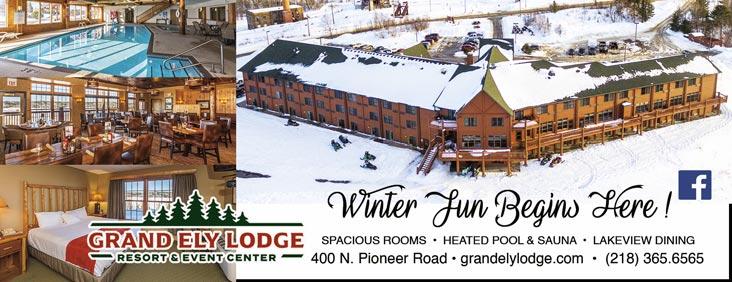
the deer walked back into the woods. The only photo she had with the wolf was the one taken through the car window, not even realizing the wolf was there. The photo content is amazing, but it’s technically far from her high standards. It was a hard decision to make public something so shy of her usual perfection. But she did, and it has been one of her most widely published and purchased images.
When Heidi first decided to make photography her career, she knew she wanted to develop her own style. After a few years of shooting breathtaking sunsets, sumptuous scenery, and an occasional wild animal caught posing perfectly, she wanted something more action-oriented. She was drawn to animals in action and sought to catch them the way a good sports photographer stops an athlete in motion.
One winter Heidi became determined to catch the dance of the northern lights in the same way she did stop-action shots of animals. She hauled her equipment out to the darkness in the middle of Moose Lake, far from any light source or smoke or exhaust that would cloud the air. The aurora was lively and persisted hour after hour. She took one picture after another through the whole night. By dawn she had learned the exact settings to use to make the stars pinpricks instead of blobs, to make the aurora into a shining curtain, and to keep her fingers and her equipment functional at 20 below. Now she teaches others what she learned.

© Heidi Pinkerton
You can find more photos by these photographers online: Ken - SnottyMoose.com Heidi - RootRiverPhotography.com Jim - JimBrandenburg.com
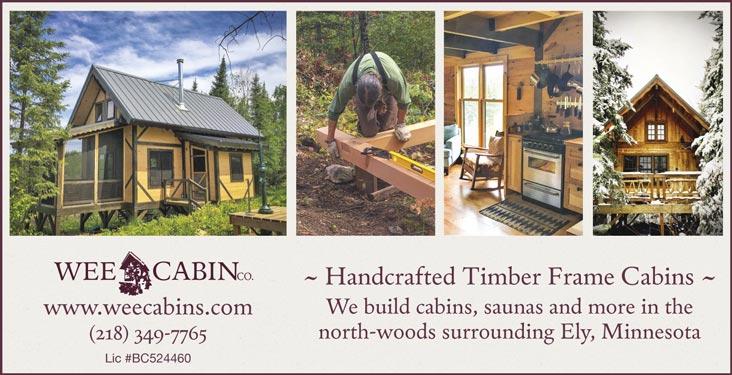
Ken Hupila was driving a snowy back road when he spotted a fox walking his way about a quarter mile ahead. Instead of driving closer, he stopped, got out, and stood by the driver-side door, camera in hand. The fox kept coming, and coming, and coming…until it was at his front bumper looking up at him. Then it walked around the passenger side to the back of the truck, peeked at Ken, yawned, and lay down in the snow. After a few minutes of appearing to nap, the fox jumped up and began to play, scooping up snow with its nose and tossing it into the air, then looking at Ken, running a short ways into the woods and back again, still flirting with Ken, and rolling in the snow without a bit of concern. This went on for at least an hour until Ken, having all the photos he could possibly want and other tasks to attend to, drove away, marveling at what had just happened.
Ken likes to catch animals interacting with him or each other–looking directly at the camera or displaying something that might be an emotion a human can relate to. A hunter since he was a kid, Ken has come to enjoy shooting animals with his camera rather than a gun. “Shoot and release” he calls it. Although he doesn’t usually use a blind, his deer stand has provided some opportune moments, including the time a curious fisher was attracted to the remains of a grouse that had been field dressed nearby. This winter Ken will be prowling the woods in hopes of capturing more lynx images.
Self-taught from the beginning, Ken shared his skills with high school students using a dark room and film. But he was quick to grasp the new technology of digital photography. Now he teaches others to take the pictures and process them with software through classes at the Ely Folk School.
© Ken Hupila

One might think that the pinnacle of a photographer’s career would be working for National Geographic. What could be challenging after that? But Jim Brandenburg wasn’t going to stop with those accolades. Instead, he challenged himself to some unusual projects. Most photographers take hundreds and even thousands of pictures for every one that is published. Jim challenged himself to snap the shutter just once a day for 90 days. Amazingly, there were no bad or even mediocre photos. He published each one in his book Chased By the Light. Jim’s very first assignment for National Geographic was to get photos of beaver and moose in the Ely area. Bursting with enthusiasm and pride (he’s much more humble now), he drove his rented green station wagon here in the mid-1970s. He was shocked to find people who were adamantly opposed to the wilderness restrictions recently enacted and let their frustration and anger spill over to those who were recreating in, documenting, or supporting canoe country’s wilderness designation. When a barber ran across the street to Jim’s rented car to ask, “You’re from National Geographic?” Jim proudly provided an affirmation. “Well, get out! We don’t want your kind here,” was the reply. As Jim soon discovered, Ely has long had its polarized opinions and plenty of vociferous people willing to shout about them. In spite of this rather nasty introduction, out of the whole planet, Jim chose Ely as his home base. Jim’s photographic style is all about the light. His wildlife subjects are often a minor part of the picture in terms of the
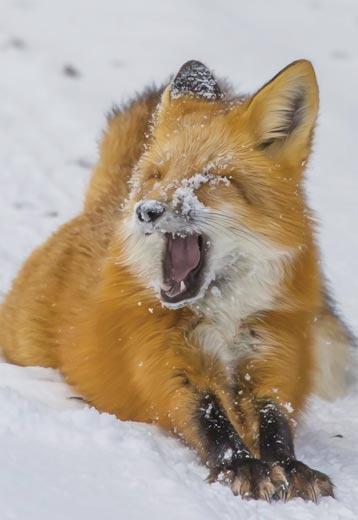
© Ken Hupila



space they occupy, but they are essential to the spirit of the image. The location is forefront, and the light, often created by the weather, provides the mood. The splash of a raindrop hitting the surface of a lake or falling snow drifting across an opening in the trees are not backdrops to the animal subject, but create for the viewer a more complete sense of being present in the animal’s world.
Ken, Jim, and Heidi all expressed their concern for the animals they photograph. They have strong ethical compunctions about not interfering with their subjects’ lives, interrupting critical feeding or mating behaviors. With their big lenses, they can often get the images they want without crowding the creatures. They are also clear about which images are wild animals and which are not. Heidi takes great photos of the wolves at the International Wolf Center (such as the cover of this magazine), and Ken likes shooting the bears at the Shute Center near Orr, but they don’t pass them off as truly wild. Trail cameras are useful to determine what animals are in what areas, but more sophisticated equipment and a lot of patience is required to get the perfect picture. And for all three there is a sense of deeper connection to their subjects, a sort of spiritual relationship that doesn’t lend itself well to a verbal description.
How do they stay warm for hours holding still in sub-zero temperatures? Layers of clothing are critical, but they also need dexterity. Heidi’s hands are covered in three layers of gloves with fold-over style mittens that allow her fingers to function. She goes through cases of hand and toe warmers, placing them under her hat, in her balaclava, and on her camera batteries. Ken uses coldweather golf gloves under over-sized mittens and mukluks with heavy felt liners. “When you grow up in the cold, you just adapt,” he adds. Jim wouldn’t
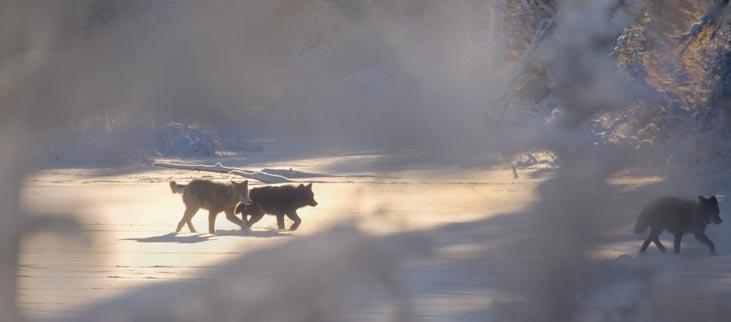

go through a winter without his Steger mukluks, but he also believes cold discomfort is partly psychological. Frostbite is to be avoided, but feeling chilled can be diminished by adjusting his state of mind.
When those of us who are not avid winter wildlife photographers see the amazing photos from these three, we have to wonder, “How do they get so lucky? I’ve never seen anything like that!” It’s not luck. These folks spend a lot more time in the woods than most of us, and they move slowly and pay attention. Ken says, “It’s 5% knowing where to find what you’re

© Jim Brandenburg looking for and 95% serendipity.” Jim has developed an almost meditative focus when he is photographing that he believes sharpens his perception. Heidi lives by her father’s motto: “The harder I work, the luckier I get.”



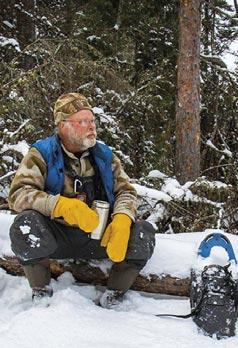
Jim Ken
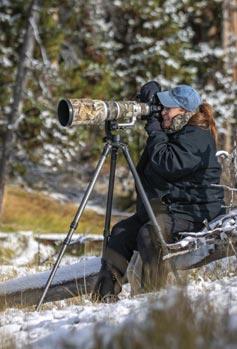

© Ken Hupila Heidi
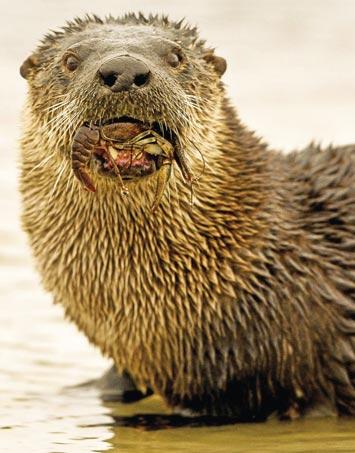

© Heidi Pinkerton








